Total Enterprise Storage Systems Installed Base Expected to Grow at 30.9% CAGR between 2020–2025
Totaling 5.5ZB
This is a Press Release edited by StorageNewsletter.com on September 20, 2024 at 2:01 pm The author of this market report is Andrew Smith, research manager, cloud infrastructure services, IDC Corp., published on August 2021 and sponsored by Quantum Corp.
The author of this market report is Andrew Smith, research manager, cloud infrastructure services, IDC Corp., published on August 2021 and sponsored by Quantum Corp.
Data Deluge: Why Every Enterprise Needs a Cold Storage Strategy
Increasingly Massive Unstructured Data Sets Challenge Legacy Data Management Quantifying the Data Deluge
The quantity of stored data within enterprises is forecast to expand significantly, regardless of location: 64% of enterprises expect the raw storage capacity deployed on dedicated infrastructure to increase in the next year, and 60% expect the raw storage capacity deployed on cloud IaaS to increase during that time. The total enterprise storage systems installed base is expected to grow at a 30.9% CAGR between 2020–2025, totaling 5.5ZB.
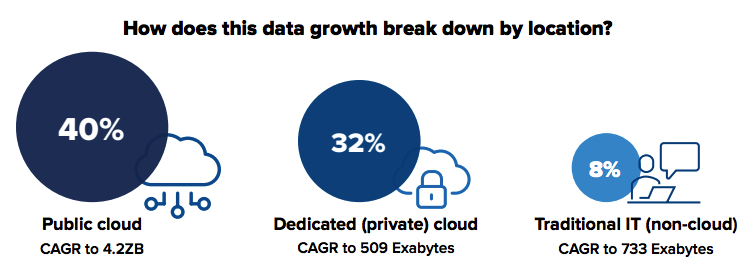
What Are the Primary Causes of the Data Deluge?
The factors driving data growth are largely consistent across dedicated storage and cloud storage environments.
The top 3 capacity drivers are:
- Implementation of new data-driven projects (e.g., ML or AI)
- Increased amounts of data generated by existing sources (e.g., increased resolution of video)
- General increase in digital data
Dedicated Storage Drivers IaaS Storage Drivers
- Increased amounts of data generated by existing sources (e.g., increased resolution of video)
- General increase in digital data
- Implementation of new data-driven projects such as ML or AI
- New sources of the data (e.g., sensors)
- Implementation of data protection/DR strategies
IaaS Storage Drivers
- Implementation of new data-driven projects such as ML or AI
- Increased amounts of data generated by existing sources (e.g., increased resolution of video)
- General increase in digital data
- Necessity to store data for longer periods of time (driven by corporate
- policies or regulatory requirements)
- New sources of the data (e.g., sensors)
- Workload migration from on-premises/dedicated infrastructure to IaaS
- Mind the Gap: Enterprise data growth vs. IT budgets
Enterprises are generating and storing more data than ever before in support of modern digital business initiatives. IDC estimates that on average, enterprises can expect their storage capacity to grow 30% annually. But while the perceived value of enterprise data may be limitless, IT budgets are not. Infrastructure spending will struggle to keep up with the demand for more storage and larger data sets. How do enterprises increasingly do more with less when it comes to data management?

What Is a Cloud “Cold Storage” Solution?
Increasingly, enterprises are making deliberate trade-offs between storage access, performance, and price in order to effectively manage their insatiable appetite for data.
Cold storage solutions and services have become a valuable part of modern enterprise data management strategy by enabling the long-term storage of less active data, either in a standalone fashion (basic services offering storage capacity) or as one component of a data management platform. As cold storage solutions mature, they continue to add advanced functions like data tiering, classification, and compliance as they seek to increase their value and relevance to enterprises.
Cold Storage Solutions: Key Use Cases
- Preventing extended periods of service downtime associated with traditional offline, offsite, and/or removable media
- Enabling cost-effective and timely access to new data sets (generated via AI/ML algorithms, big data initiatives, device sensors, etc.)
- Delivering access to integrated or adjacent data services such as tagging, index and search, data visualization and management, and data analytics
Where Cold Storage Solutions Fit Within the Data Management Ecosystem
Think of enterprise data on a spectrum of “hot” to “cold,” where data accessed frequently (hourly, daily) is considered hot and data accessed less frequently (weekly, monthly, annually) ranges from warm to cold. In many enterprises, hot data is just the tip of the data management iceberg. Warm or cold data comprises most of the capacity stored. As enterprise workloads become more demanding and require increasingly massive quantities of data for long-term analytics and compliance purposes, organizations will be pressured to manage and retain the 90% of data likely considered warm/cold.

Many cold storage solutions serve the warm/cold segments of the enterprise data ecosystem, ensuring cost-efficient storage, timely access, security, compliance, and long-term retention of massive data sets.
Key Benefits and Challenges of Cold Storage Solutions
Benefits:
- Low cost: Solutions are built to achieve low costs, often prioritizing cost reductions over time as well
- Extended retention: Designed with long-term data retention in mind
- Efficiency: Solutions and services are built to consume the fewest resources in terms of power/cooling necessary
- Low touch: High level of data management and storage automation to achieve efficiency and minimal human intervention
- Access to adjacent data services: Built to offer access to adjacent/ embedded services native to the ecosystem (e.g., analytics tools to produce reports and dashboards; security and compliance tools to trigger alerts or enforce access policies; self-service data retrieval and backup capabilities)
Challenges:
- Longer data access times: These solutions rarely deliver millisecond response time for data
- Minimum storage duration: Many solutions enforce a minimum storage duration for files/objects – typically measured in months or years
- Costs associated with data access: Many service providers have built additional billing structures around data access (e.g., egress)
- Lack of automation: The scale and cost profiles required for cold storage can often overshadow the need for automation and advanced data management tools which allow more active use of cold data
Cold Storage Solutions Provide More Than Low-Cost Data Management
Cold storage solutions are designed with low cost in mind, but cost is only one piece of the puzzle. Modern solutions also enable automated, timely access to data that might otherwise be discarded, lost, or deleted.
Buyer prioritization of “workload requirements” and “storage platform features” as key purchasing criteria are indicative of a shift in the perceived value of storage – moving from a focus on cost toward prioritizing workload performance, security, and the breadth of enterprise grade storage features provided natively
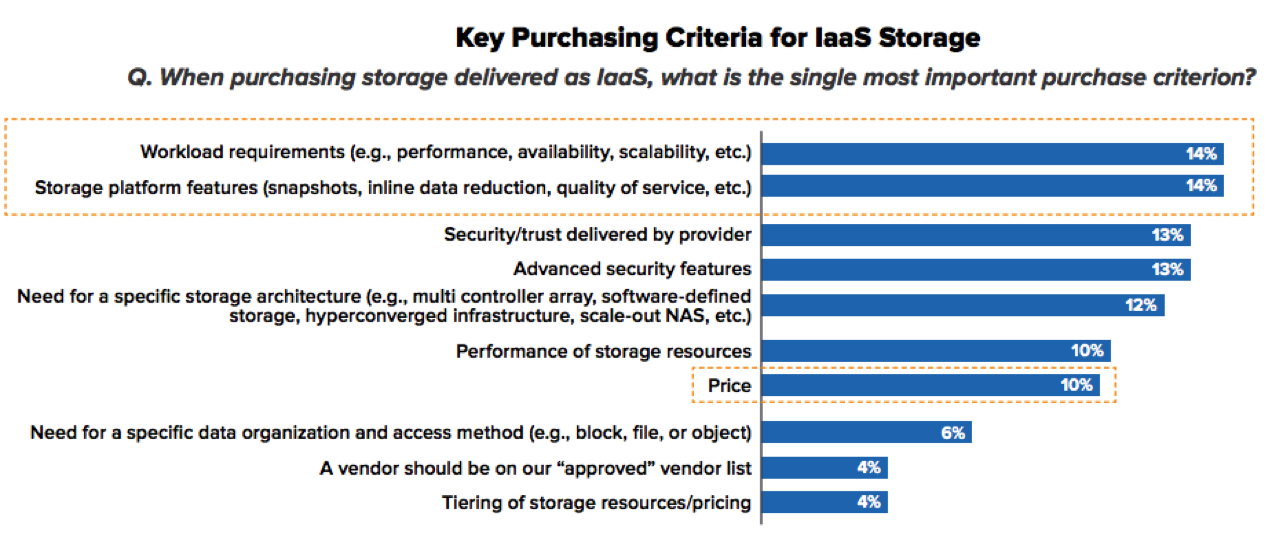
Building the Business Case: Improved Cloud Data Security and Compliance
Security and compliance remain top concerns of cloud storage buyers. IDC data shows that 75% of enterprises expect secondary storage capacity to increase due to privacy regulations (e.g., CCPA, GDPR, and HIPAA). Security and compliance also are the top 2 reasons why enterprises host workloads in private cloud instead of public cloud. Most cold storage solutions address these concerns with data security features like encryption, 11+ 9’s of durability, geo-redundant replication and erasure coding, integrated data management and life-cycle policies, and longterm data preservation and deletion policies. Many of these features go beyond the baseline data management and protection offered in standard cloud storage services.
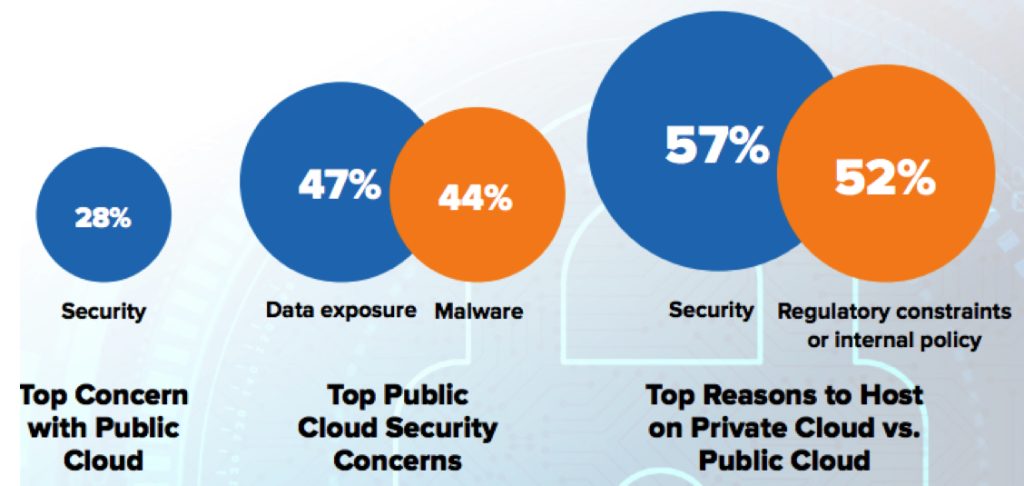
Building the Business Case: Enabling Long-Term Data Retention
The perceived value of data will cause many enterprises to rethink their data management strategy to deliver maximum retention (7+ years). It is impossible to know what data will be valuable for future business endeavors, or how data will be leveraged for future enterprise applications/workloads. Many organizations will take a conservative approach to data deletion and disposal, preferring to keep as much data as possible, for as long as possible. This leads to increased storage durations and complexity. Cold storage solutions are architected with long-term data retention as a core tenet – providing tools for search, discovery, classification, audit, and deletion of data. With these tools, enterprises can be confident their longterm storage remains accessible when needed, and can be monitored and disposed of efficiently and compliantly.
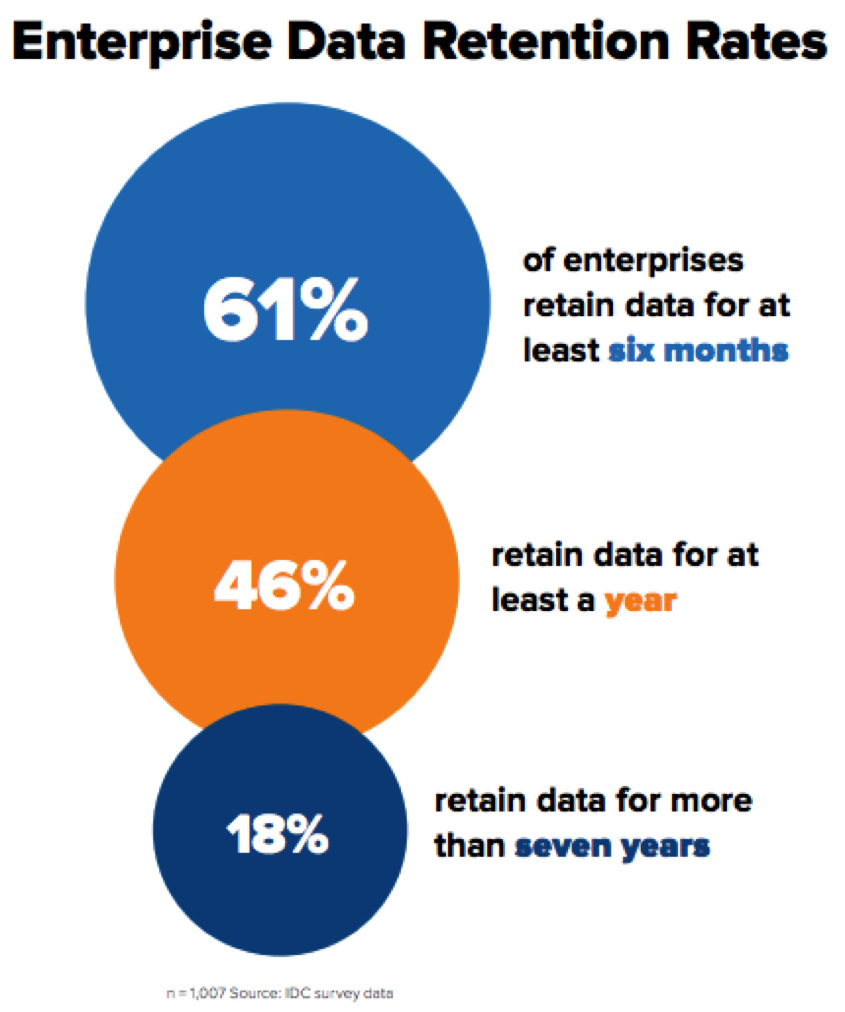
Building the Business Case: Ensuring Data Movement
For many enterprises, data migration is a journey, not a destination. Cold storage services are an integral part of this journey, providing data management capabilities that efficiently tier data to the most cost-effective storage environments. These services also help control the movement of that data via metadata tagging and classification, advanced compression and de-dupe, and modern data protection and backup features.
About 50% of the applications are expected to stay in place over the next year. The primary drivers of workload movement to and from cloud include:
- IT resource consolidation
- Better TCO
- Data security
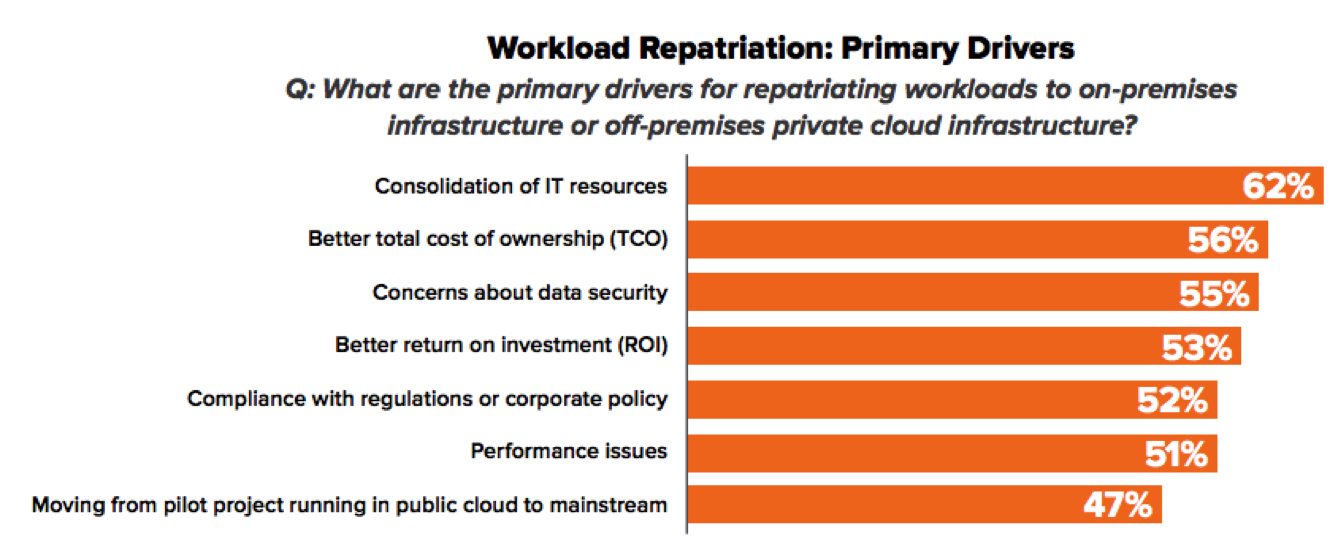
Essential Guidance
If your organization is considering a cold storage solution, IDC recommends the following evaluation criteria:
Expertise with Media Types
- Using a range of storage media types (HDD, tape, optical, flash) should be seen as a differentiator.
- Innovations in storage media (e.g., molecular/DNA-based storage, flash-based storage) may result in significant cost savings in the long term.
- High Levels of Automation
Extensive automation of data management-related tasks, integrated workflows, access to cloud storage APIs, and nondisruptive service improvements, all reduce human interaction and cost.
Access to Adjacent Services
- Analytics, reporting, search capabilities, and seamless access to adjacent services (e.g., databases, security apps, collaborative apps) help ensure the platform keeps up with future business requirements.
Multiple Deployment Models
- Finding a provider with a range of deployment flexibility (on premises, in the cloud) can be highly advantageous for enterprises with complex data management and security requirements.









 Subscribe to our free daily newsletter
Subscribe to our free daily newsletter

